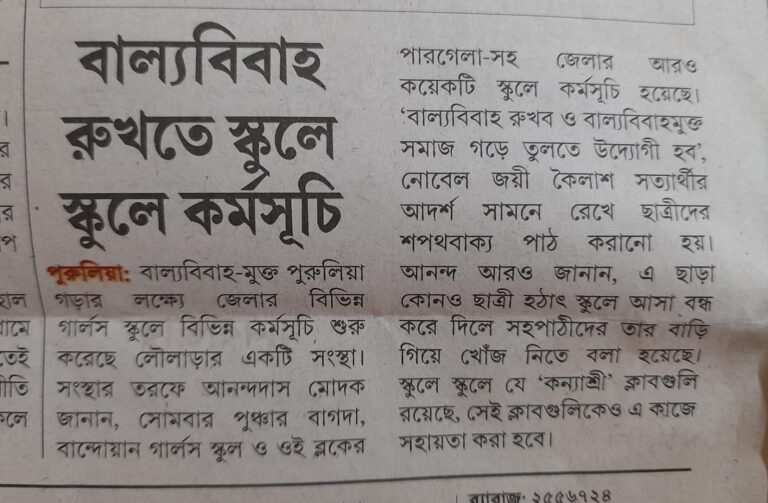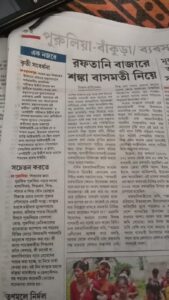Our Work.
Child Marriage Free India Campaign
MANT is dedicated to prevent Child Marriage, Child Trafficking, Child Labour and Child Sexual Abuse. The organization participated and organized Child Marriage Free India Campaign in Bankura and Purulia district in West Bengal covering over 100 villages under the project.
The Campaign Activities included:
- June Action Month – MANT conducted an awareness campaign against child labour and child marriage on the World Day Against Child Labour (12th June).
- World Day Against Trafficking in Persons – Campaign and Pledge against Child Marriage and Child Trafficking
- 16 October 2023 – Child Marriage Free India Campaign Event – The campaign event was conducted in Bankura and Purulia districts covering 100 villages. We want to express our heartfelt gratitude to CWC, RPF, District Social Welfare Officer (DSWO) and other Government department of Purulia district for their cooperation. Bankura Sadar Police Station and JJB supported us. The campaign was organized in 14 villages at Bankura and 12 villages at Purulia. 1500 villagers and 5000 students took pledges against child marriage.
- PAN India Campaign by NCPCR for Rescue and Rehabilitation of Child and Adolescent Labor – 28 Child labor cases were reported by MANT.
Provide the text
Our Goal
Ullamco laboris nisi ut aliquip ex ea commodo con-sequat. Duis aute irure dolor in reprehenderit in vo-luptate velit esse cillum dolore eu fugiat nulla paria-tur. Excepteur sint occaecat cupidatat non proident, sunt in culpa qui officia deserunt mollit anim id est laborum. Sed ut perspiciatis unde omnis iste natus error sit voluptatem accusantium.
Our Need
Sed ut perspiciatis unde omnis iste natus error sit voluptatem accusantium doloremque laudantium, totam rem aperiamillo inventore veritatis et quasi architecto beatae vitae dicta sunt explicabo. Nemo enim ipsam voluptatem quia .
CAMPAIGN HIGHLIGHTS
Moments of connecting MANT’s activities with the masses at the Manbhum Fair and Book Fair in Purulia.
Narrowcasting by Radio Nityananda Janavani 91.2 FM at 100 villages in Bankura and Purulia – Tableau campaign to stop child marriage-child labour-child trafficking-sexual harassment.
Let’s March to School’ Campaign.
Awareness at Local Fair in Purulia
When people think there is no use of the school after 10th standard for girls, we feel the responsibility to reach them at Punisole Bankura.
Our Journey So Far: Ensuring Justice for Every Child
Highlights of our efforts and milestones in securing access to justice for children. Witness the impact and hear stories of change from those we’ve helped.


